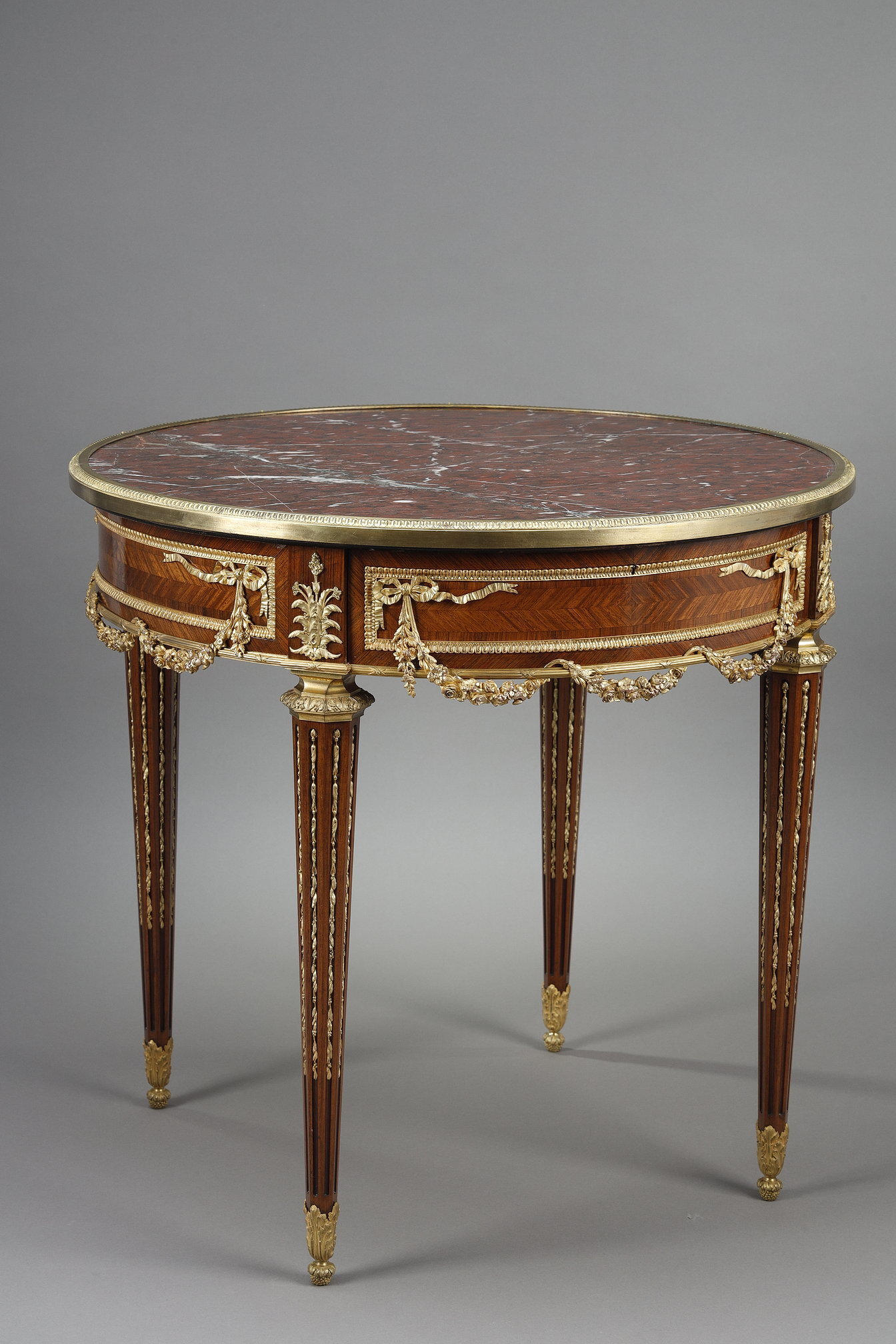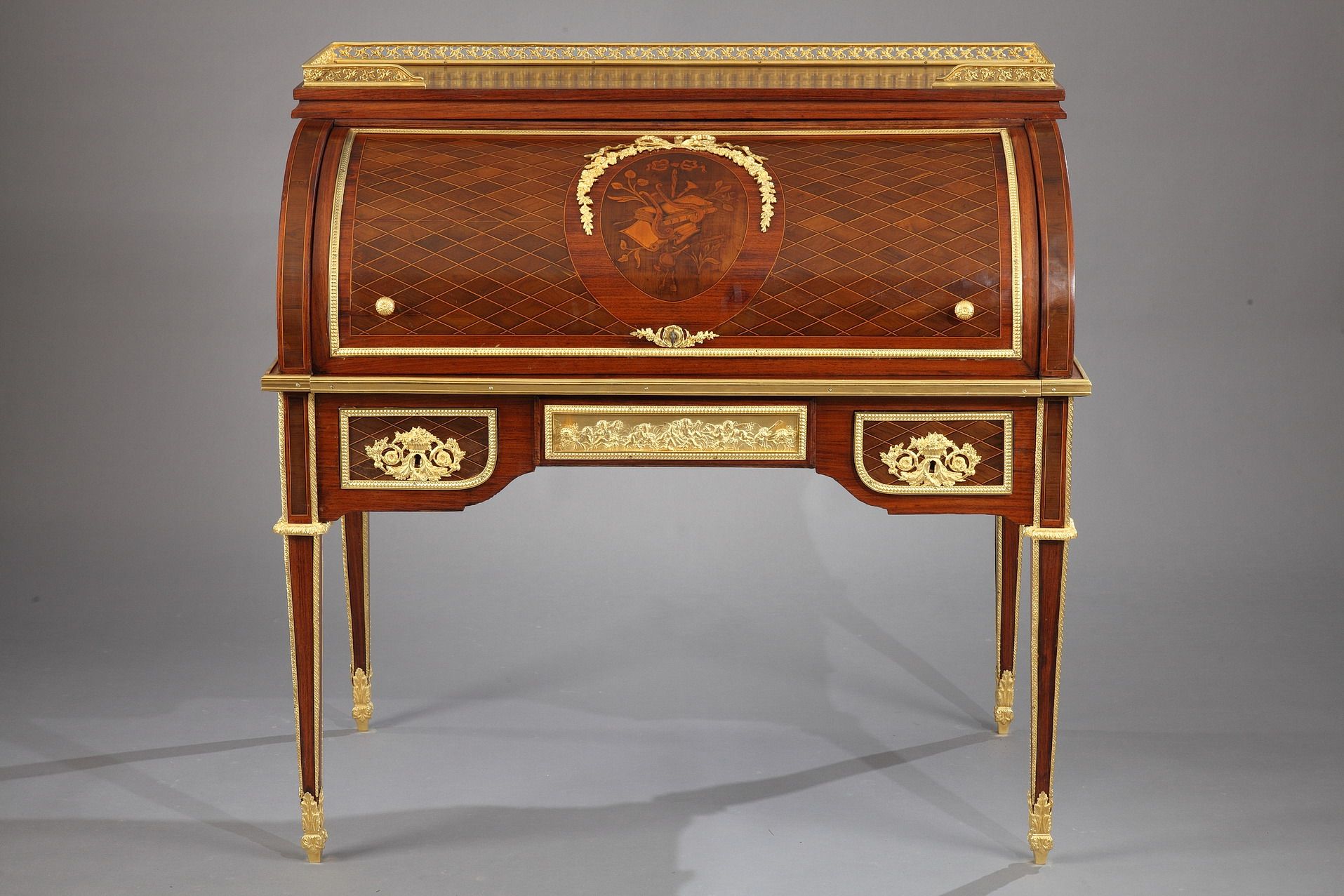The Louis XVI style (1774-1790)
02.07.14
After the period of experimentation with the Transition style (1765-1775), the Louis XVI style emerged in the early 1770s as the elegant expression of a return to classicism, free from the rigidity of the "Greek" style and the exuberance of the Rococo style . The archaeological discoveries at Pompeii and Herculaneum, beginning in the late 1730s, inspired the decorative arts and revived interest in classical styles.
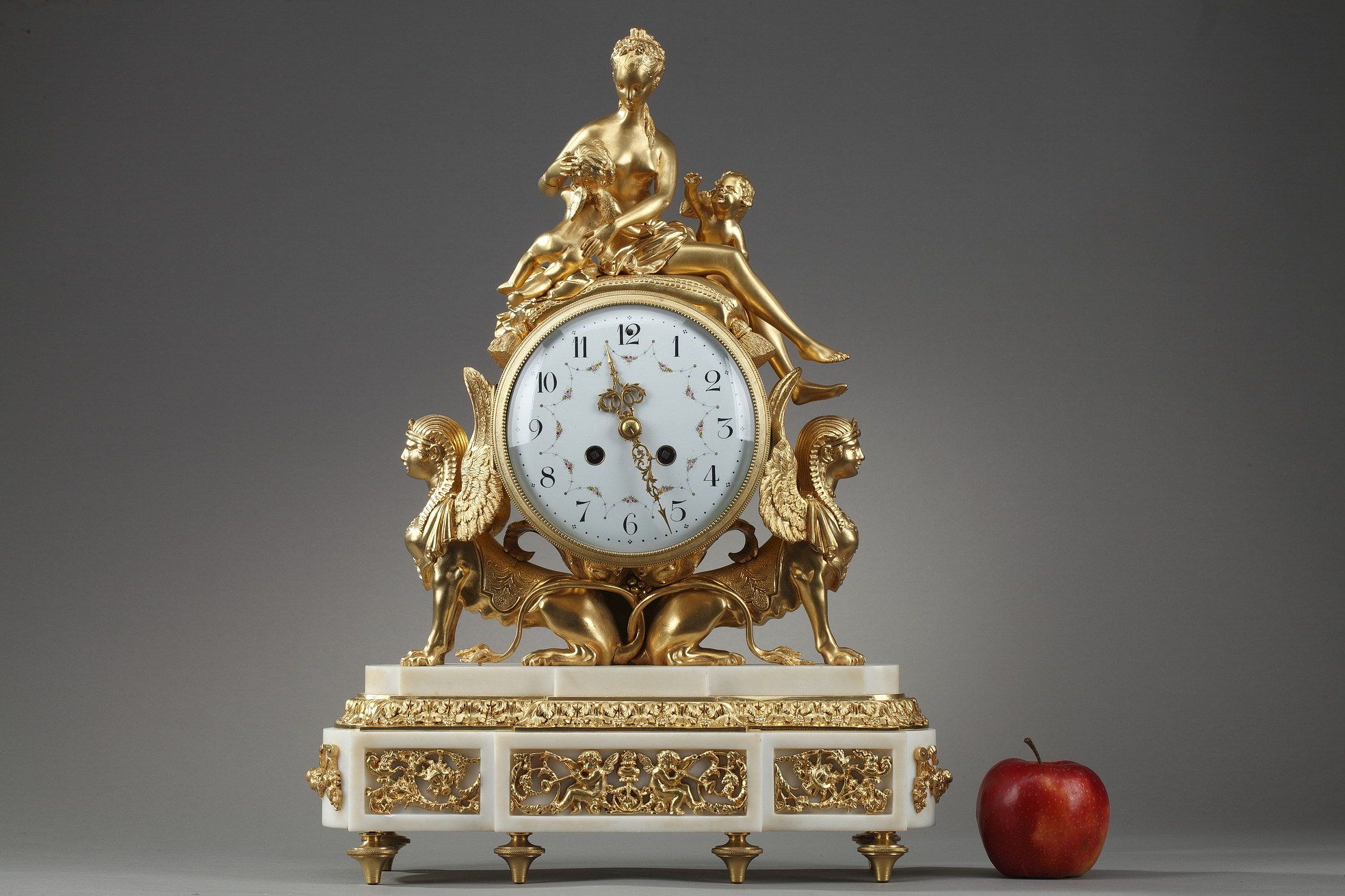 Louis XVI style gilt bronze clock depicting Venus on her chariot
Louis XVI style gilt bronze clock depicting Venus on her chariot
Furniture and interior decoration
While Louis XVI had rather simple tastes, Marie Antoinette loved luxury and devoted herself to decoration, a field in which she intended to set the tone. In particular, she had apartments built in the royal residences of Versailles, the Tuileries, Compiègne, and Fontainebleau in accordance with her tastes, which she decorated and furnished by commissioning from the greatest representatives of the arts and crafts of her time.
Louis XVI style pedestal table
Jean-Henri Riesener , probably the most talented cabinetmaker of his time, worked almost exclusively for the queen. He created furniture distinguished by its elegant proportions, the quality of the materials used, and the excellence of its craftsmanship.
Cylinder desk after a Riesener model attributed to the Beurdeley firm
Adam Weisweiler, a German cabinetmaker whose reputation in European courts was considerable, was invited by the queen to Paris. He settled on rue du Faubourg-Saint-Antoine, a hub of cabinetmaking in the 18th century, where he produced small-format furniture, including numerous tables.
Among the best-known carpenters were Georges Jacob, supplier to the Garde-Meuble from 1774, and Jean-Baptiste Séné, who also obtained the title of supplier to the Garde-Meuble in 1785.
The Louis XVI style retained some of the multi-purpose furniture features of the Louis XV style, whose lines lost their fluidity in favor of straightness and restraint. Generally speaking, from the 1770s onward, all furniture abandoned the predominance of curves to adapt to the Greek Revival style. Flat surfaces and right angles returned to fashion. Ornamentation served to soften this severity without ever interrupting the lines and while maintaining absolute symmetry around the central axis.
Several modifications and new features are worth noting. The tops of oval or round pedestal tables and some small side tables are surrounded by a copper gallery.
The cabinets have a fine, projecting, molded cornice, sometimes straight. The lower rail is almost always carved, molded, or sculpted; the feet are either console-shaped or scalloped. Most often, Greek key patterns, wreaths of flowers, scrolls, and acanthus leaves are interspersed with rows of pearls and fluting.
 Pair of Louis XVI style walnut and marble console tables
Pair of Louis XVI style walnut and marble console tables
The straight, unrecessed chest of drawers remains a staple in living rooms. Consoles and corner cabinets in walnut or fruitwood are often paired with it, and half-moon shaped models are also common. Straight drop-front secretaries, adorned with rich marquetry or Japanese or European lacquer, are also highly prized.
Louis XVI style chairs are particularly elegant. The backs have varied and original shapes: hat-shaped, racket-shaped, lyre-shaped, sheaf-shaped and especially medallion-shaped, a typical back for the cabriolet chair.
Precious objects, pieces of goldsmithing and porcelain , statuettes of marble or bronze, chandeliers, wall lights and especially numerous clocks in marble and gilded and patinated bronze are placed on the fireplaces and furniture to enliven the decoration.
Ornamentation
The Louis XVI style revived the classical repertoire: friezes of Greek key patterns and interlacing, rosettes, pearls, egg-and-dart motifs, baguettes, interlacing patterns, heart-shaped motifs, laurel or acanthus leaves with regular outlines, and finally, the medallion, always oval, adorned at the top with a ribbon bow. The straight line returned with force and was omnipresent. All sinuous lines were banished: only semicircles and ellipses were permitted.
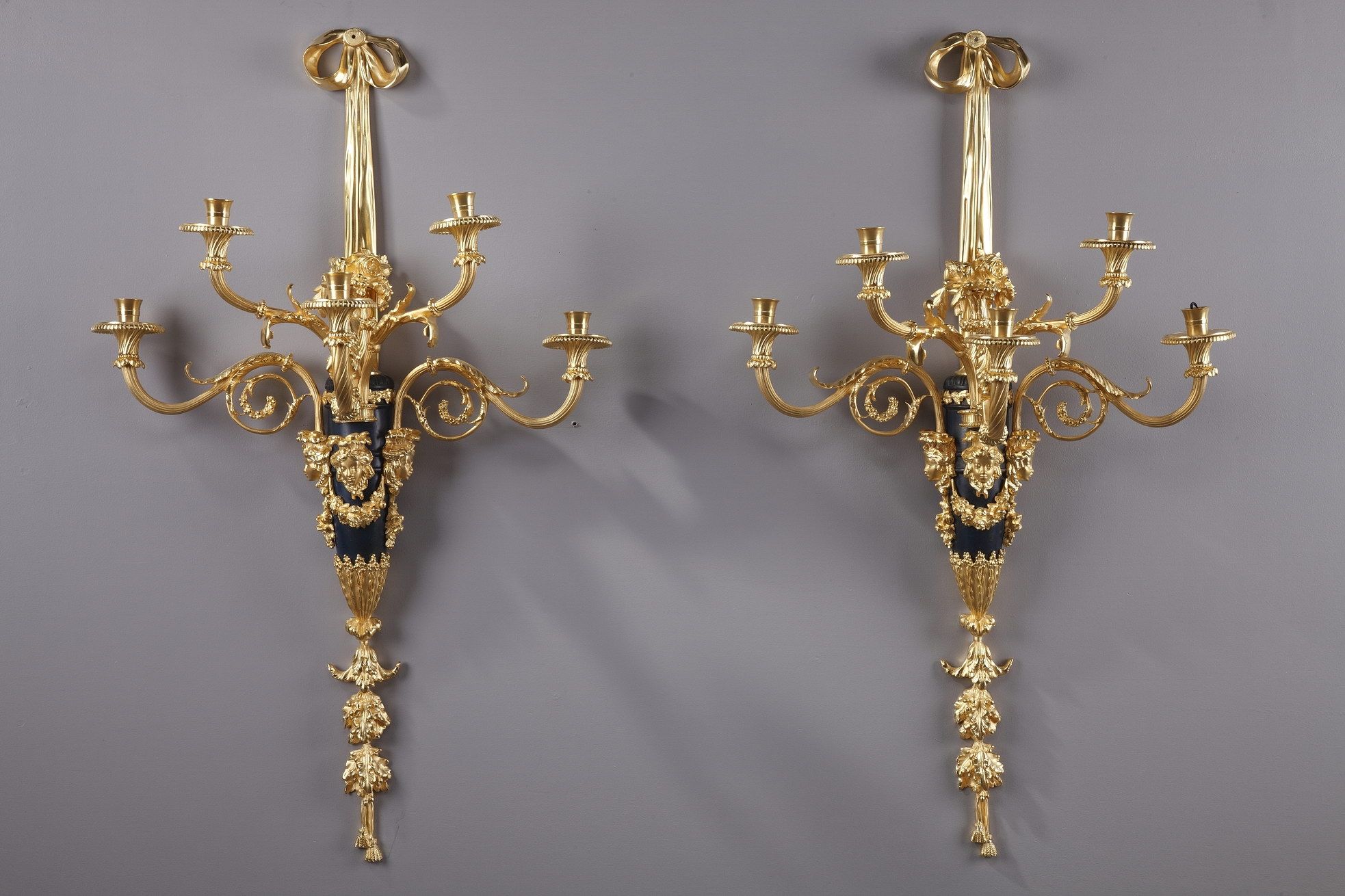 An imposing pair of Louis XVI style wall sconces after Thomire
An imposing pair of Louis XVI style wall sconces after Thomire
However, this classical repertoire lacks the rigor of the highly formal Greek style. In its first part, the Louis XVI style combines antique elements with motifs of flowers, palmettes and garlands of flowers and foliage, inspired by the return to nature, so appreciated by Marie Antoinette.
Under his influence, the decoration was enriched with flowers, flower baskets, musical and rustic attributes, ribbons and ribbon bows . Moreover, to avoid an excessive dryness in the antique style, cabinetmakers tempered it with light Roman-style friezes in gilded and chased bronze and graceful arabesques derived from Etruscan paintings.
Among the decorative motifs characteristic of the style are the objects found in the excavations: vases, urns with rectangular handles, tripods, perfume cassolettes, fire pots, dentils, rosettes are also borrowed from Antiquity such as eagles, dolphins, rams' heads, lions, chimeras, sirens and griffins.
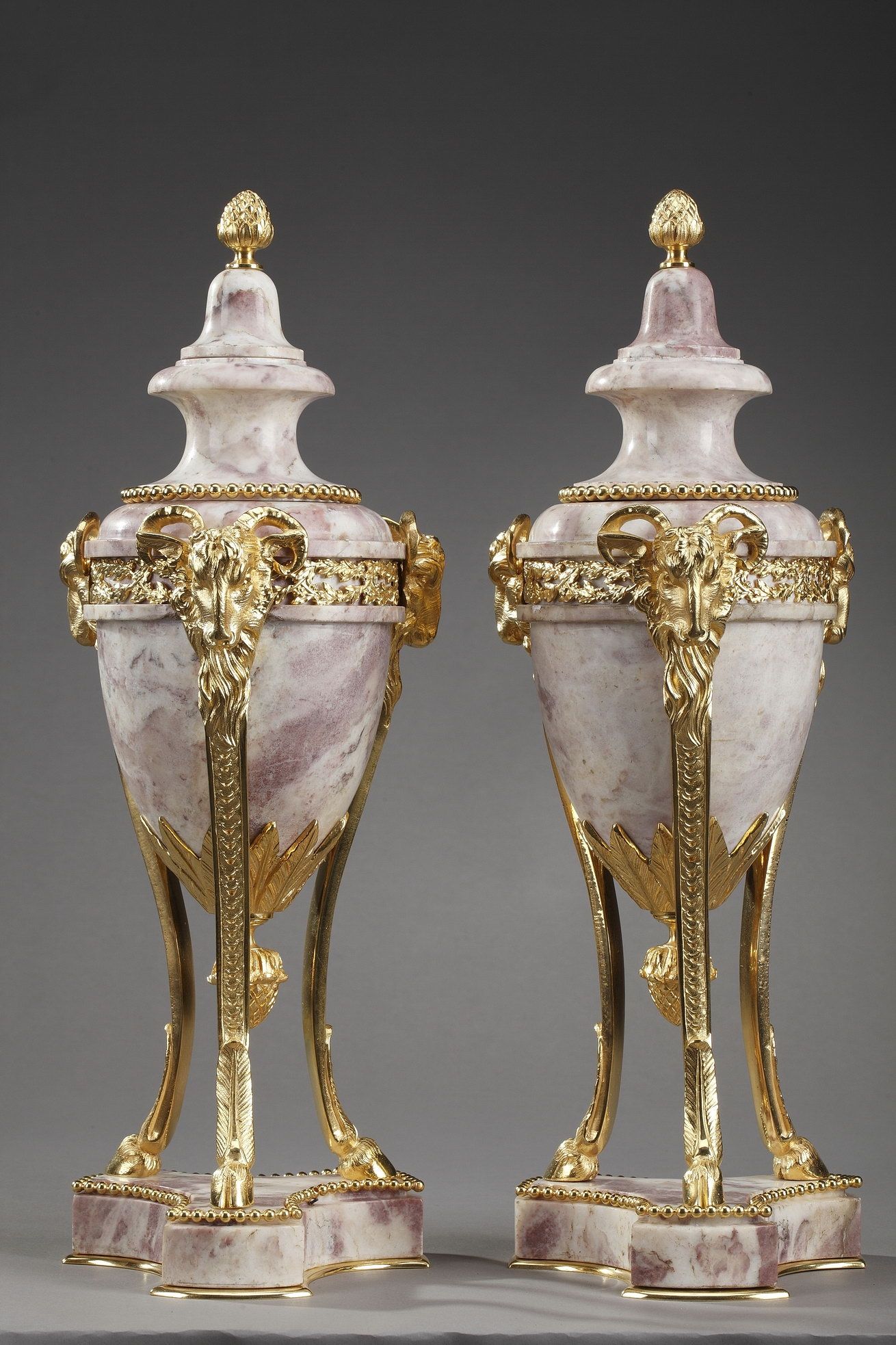 Important pair of Louis XVI style marble cassolettes
Important pair of Louis XVI style marble cassolettes
The artists of the time knew how to combine these various influences with lightness and restraint: the decorations are more measured, the flowers do not invade the surface but are braided into garlands or presented in baskets, the bronzes are lighter.
The iconography of the trophies is appreciated, with a variety of themes: trophies of war, but also of music or even scientific instruments. The taste for the Orient persists, and the merchants commission cabinetmakers to create furniture in Japanese lacquer and European varnishes.
The "antique style," sometimes called in its most refined expression the "Marie-Antoinette" style, extends beyond the reign of Louis XVI (1774-1791) since it spans more than half a century until the end of the Empire.


